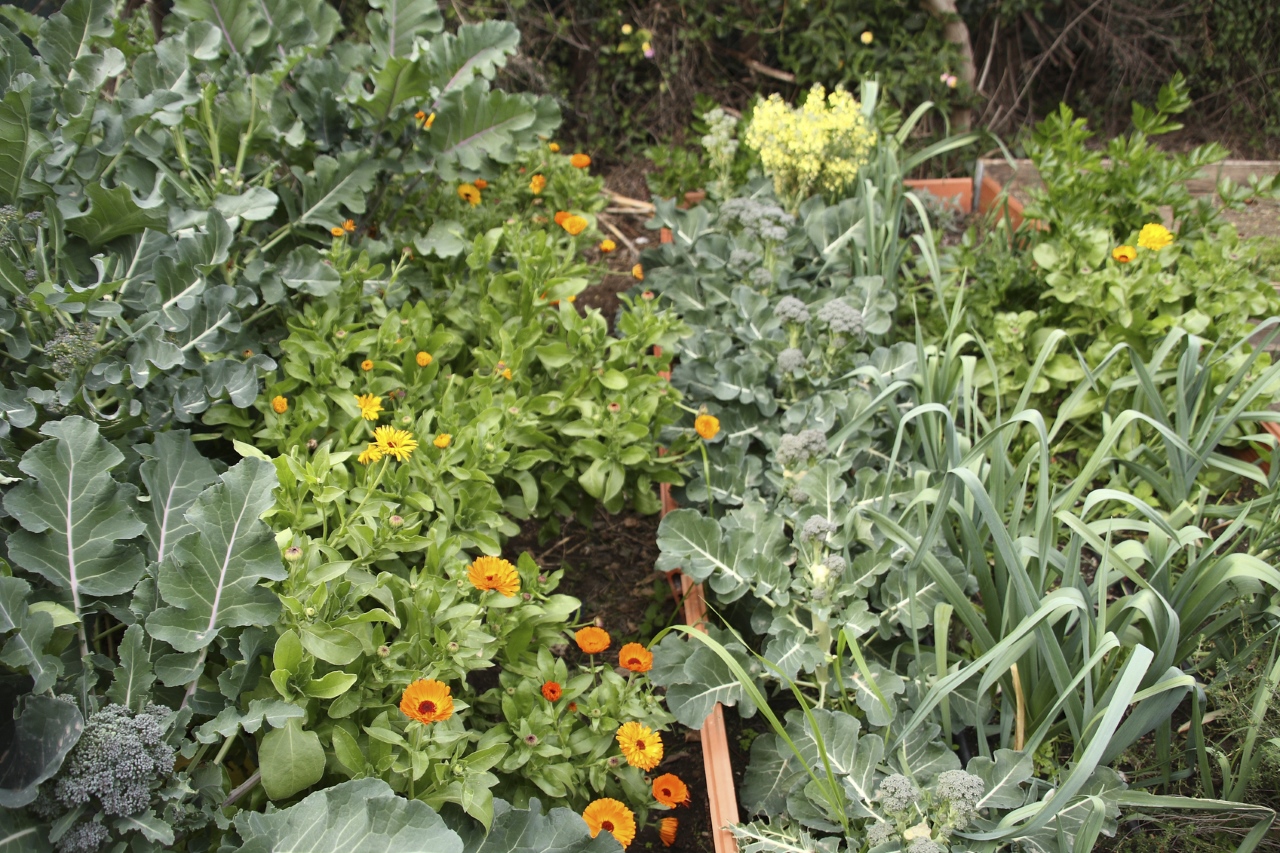Companion planting is a technique in gardening where different varieties of plants are growing in one small area, in order to benefit one another. Companion planting is good for deterring pests,while protecting and attracting beneficial insects.
The flowers and herbs grown around vegetables can even attract bees and other beneficial insects which helps keep pests away. The different scents of flowers will mask the scent of those vulnerable vegetables. Most of all, pests are attracted to vegetables in the Brassica family such as cabbage, broccoli, especially if they are grown in rows.
This mono-culture way of planting one variety of vegetable in long rows attracts pests. However, pests can be prevented when Brassicas are inter-planted with different vegetables that match their companion plant.
To do this, plant different vegetables according to their companion match in a cluster to break up the monotony in the garden. Broccoli is in the Brassica family, and needs extra protection from garden pests, so plant beans, oregano, rosemary, and chamomile in a cluster.
However, broccoli does not fare well with strawberries grown nearby. Strawberries don't like cauliflower or cabbage either, but prefer to be planted with mint, spinach, lettuce, and borage.
One other example of companion planting is carrots with beans, sage, and melons. Carrots, however, do not grow well around dill and celery. Another example of companion plants is cucumbers with radishes, beans, and cabbage that grow well together. Plant cucumbers with sunflowers as well, and sunflowers with corn.
Furthermore, there are also non-companion plants that will hinder the growth of other plans. While beans grow well with marigolds, catnip, cabbage, and beets; beans and peas are hindered when growing around onions, garlic, leeks, and fennel.
Additionally, don't plant cucumbers and sunflowers near potato plants. Potatoes should not be grown around apple trees, tomatoes, or strawberry plants either, but potatoes can be grown closely with beans, marigolds, basil, and hemp. Onions, leeks, fennel, and garlic hinder the growth of beans and peas; however, garlic can be planted around roses, fruit trees, and cabbage. Garlic is great to planted next to tomatoes to improve the taste, as well, including basil, thyme, and nasturtiums. Fennel, kohlrabi, and walnuts hinders tomatoes so do not grow them close together.
A vegetable garden can be even more attractive by planting flowers among the vegetables, which is called companion planting. Companion planting is one of the best ways to grow food because there are so many benefits.
Some of those benefits include improved taste and offering shelter to protect delicate plants from extreme heat and sun exposure. Most importantly companion planting mask scents which deters pests and attracts beneficial insects so you can harvest fruits, veggies, roots, and greens for a long time. Companion planting not only creates a symbiotic relationship among plants that help one another, but companion planting is simply a work of art in the garden.

Infographic Source: HomeAdvisor http://www.homeadvisor.com/r/a-visual-guide-to-companion-planting/#.WZHqFlGGPIV
